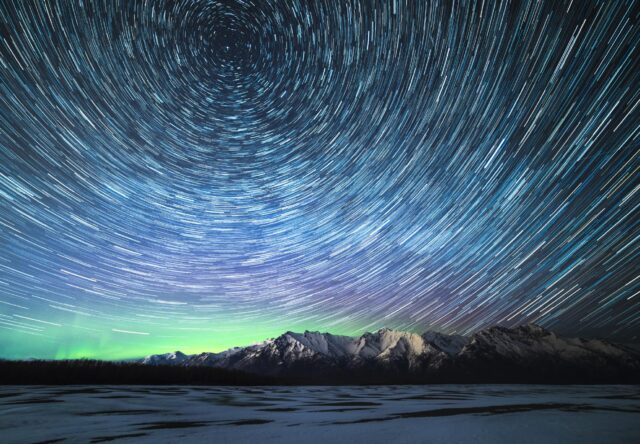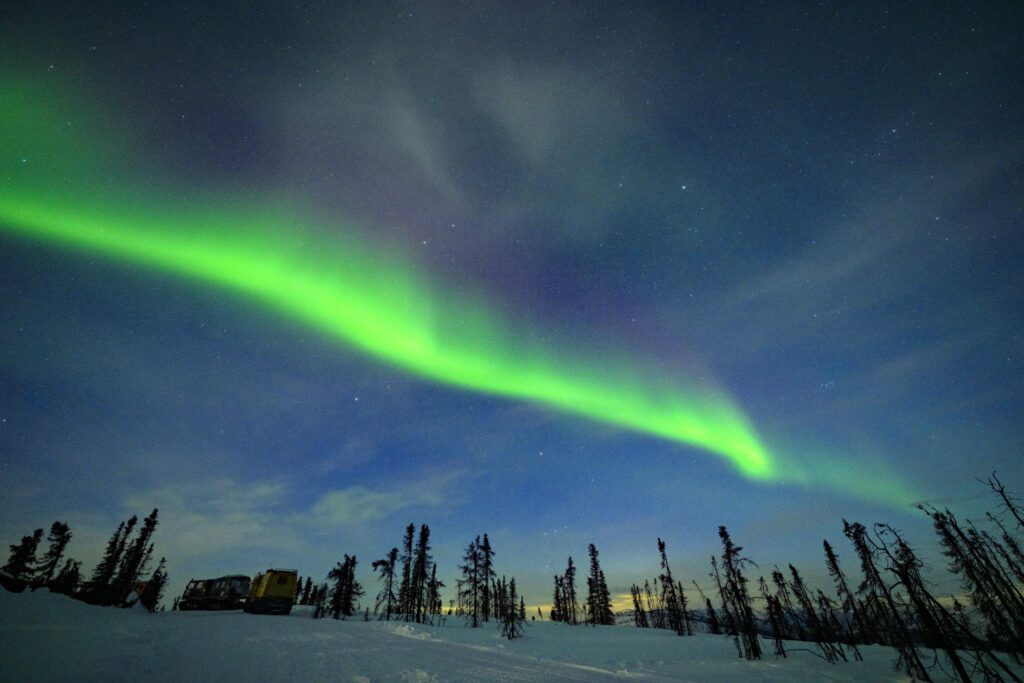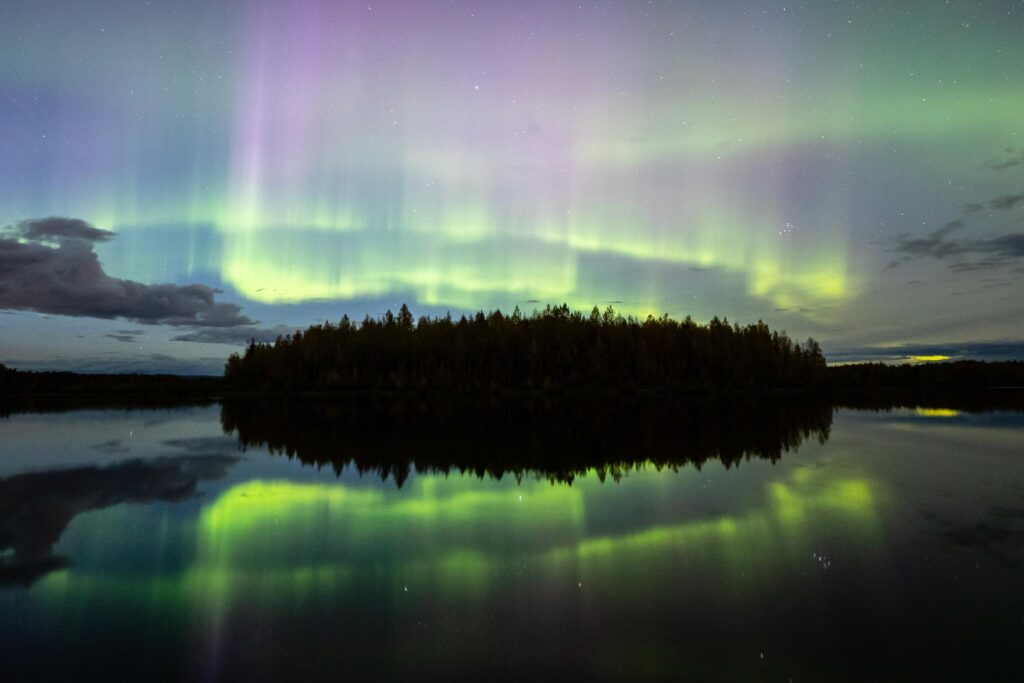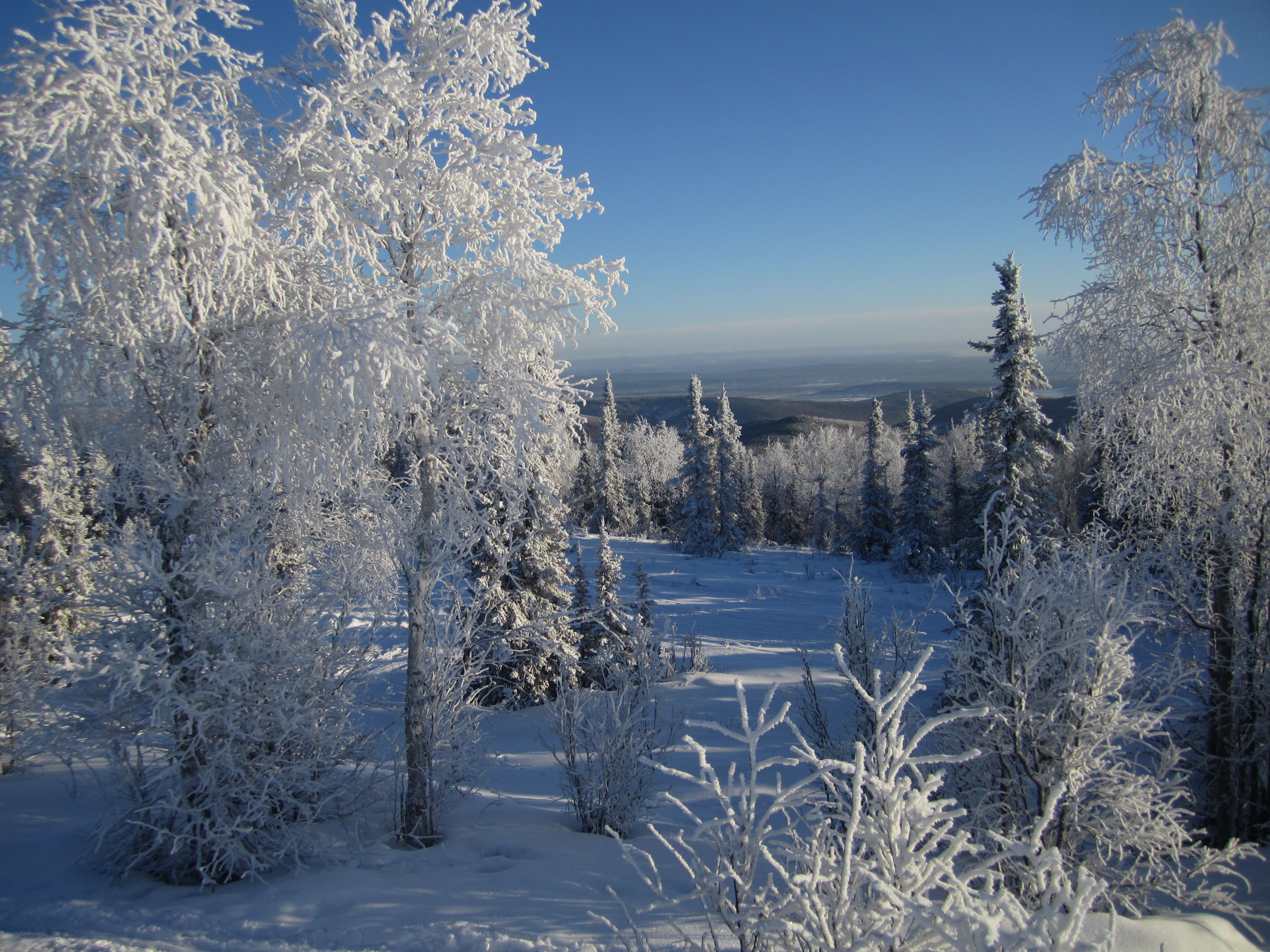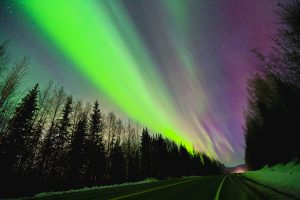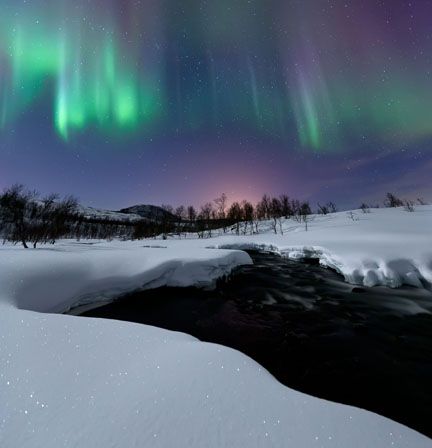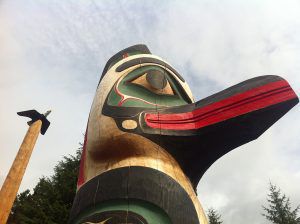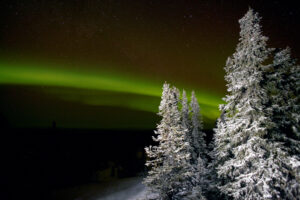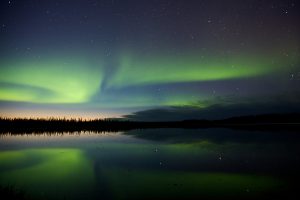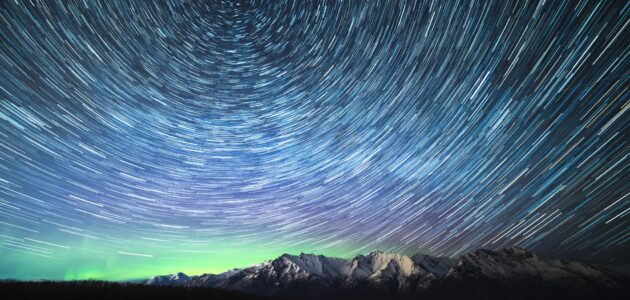
Want to really wow your friends and family on your next visit to Alaska? We’ve made it easy with a roundup of little-known facts about the aurora borealis, or northern lights, that will make you look like a naturalist of the northern latitudes. Put your reading glasses on and get ready to learn some aurora borealis facts. (Main photo credit: JodyO photos)
1. Many legends exist about the lights
As these awe-inspiring curtains of green, purple, blue and red dance and ripple across the night sky, the poetic underpinnings are uncovered in stories from the past. Indigenous legends offer many accounts of the northern lights, including many tales of life after death and spirits living in the night sky.
In Norway, some myths say the Valkyries cause the flashing, pulsing lights as they ride across the sky in full armor. It’s said that as light glints across their helmets, spears, and breastplates, it creates the display we know as the northern lights.
2. One man is credited for naming the lights
Those who are wondering who discovered the aurora borealis have come to the right place. Galileo Galilei gets credit for naming the aurora borealis upon seeing a light display around 1620. Aurora is the Latin word for “dawn,” and it also refers to the Roman goddess of the dawn. Borealis is the Greek term for “north wind.”
3. The aurora borealis makes a sound
People have debated for centuries as to whether the spectacular light displays of the aurora borealis are also accompanied by noise. Scientists at Aalto University in Finland settled the matter in 2012 when they published a paper claiming they recorded a clapping sound with the lights. Listen carefully, though — it’s an incredibly rare, once-in-a-lifetime opportunity to experience the audio version of the northern lights.
4. Aurora borealis is trapped energy
The aurora borealis rides atmospheric currents that measure up to 50,000 volts and up to 20 million amperes. Compare that to your home, where the current maxes out at 120 volts.
5. The aurora borealis can be seen further south than you think
Many people ponder the question: where to see the aurora borealis? Interestingly enough, although the aurora borealis is normally only visible near the magnetic north pole, residents of southern Canada and the contiguous United States occasionally get a visual treat in the nighttime sky. In February 1958, there was a display circling 1,250 miles, from Oregon to New Hampshire. At other times, sightings have been reported as far south as Cuba and Mexico.
Photo Credit: Travel Alaska/Chris McLennan ©2022
6. The lights begin when the earth, solar wind and fire collide
The dance of the aurora borealis begins when the sun ejects a gas cloud filled with highly charged electrons. This coronal mass ejection, as it’s called in scientific circles, takes up to three days to ride the solar winds to Earth’s atmosphere. Once in our corner of the solar system, those electrons collide with atoms of oxygen and nitrogen in the Earth’s atmosphere, producing the pulsing, shimmering light show that we know as the northern lights.
7. Different color lights mean different things
What is aurora borealis? Why do the lights display green one night, purple the next, and red or blue on another? The hues are created by the collision of highly charged electrons with oxygen and nitrogen in our planet’s upper atmosphere. The color depends on which atom is struck, and how high.
Blue = nitrogen, up to 60 miles above earth’s surface
Purple = nitrogen, more than 60 miles high
Red = oxygen, up to 60 miles high
Green = oxygen, up to 150 miles high
8. Know what you’re looking at
The aurora borealis is a breathtaking sight, whether you see it for the first time or the 500th. But it’s important to know facts about the aurora borealis to claim you’ve really experienced it all! After you’ve breathed in the Alaska awesomeness — and listened closely for the lights’ elusive clapping sound — lean into the lessons of science. Your encounter will be that much more memorable if you bring your inner nerd on your trip north.
9. You can see them from space
Just as we can see the aurora borealis from the ground on earth, the lights can also be spotted from space. In fact, while most of the northern lights appear between 55 and 80 miles above the surface, the lights can reach up to 370 miles into space, higher than the altitude of the International Space Station which orbits at 253 miles above the earth.
10. Winter is the best time to spot the aurora borealis
The best time to see the aurora borealis is during the darkest hours from late September to late April. Those who have their hearts set on spotting them should plan to try and view the lights on a clear night when the moon isn’t too bright. Winter is the best time to see them since the air is cooler and nights are longer.
11. Earth isn’t the only planet with visible aurora borealis
The aurora borealis has been spotted by astronomers on other planets that have an atmosphere such as Saturn, Uranus, Neptune and Jupiter.
Photo Credit: Travel Alaska/Niaz Uddin
12. The aurora borealis isn’t linear
The aurora borealis is constantly changing shape. Although the light phenomenon is most commonly seen in parallel lines, the borealis is determined by the changing flow in the charged particles. The aurora borealis is also known to have substorms, which are like an explosion where the aurora brightens for a short amount of time and extends outward. These substorms typically come in three phases: expansion, breakup and recovery.
Visiting the aurora borealis
Getting to see the aurora borealis in Alaska is an incredible experience that you won’t forget. To make your trip to see them the most successful, here are a couple of recommendations to keep in mind:
- Plan ahead — aim to visit in the winter when there is a higher chance of seeing the lights.
- Choose the right location — those who visit Fairbanks, Alaska, and stay for a minimum of three days increase their chances of viewing by 80%. Plus, there’s a Westmark Hotel in Fairbanks.
- Dress warmly — nothing ruins the hunt for the aurora like a cold nose, hands or feet!
- Bring a camera — you won’t want to keep this experience locked in your memories.
- Be patient — the aurora borealis can be unpredictable. Try not to be discouraged if you don’t spot them right away.
Additional tips about seeing the Northern Lights in Alaska.
Bonus tip: After you check off this list, be sure to book your stay at one of the Westmark Hotels where you can receive a wake-up call if the aurora is visible, so you don’t spend time chasing a blank sky.


